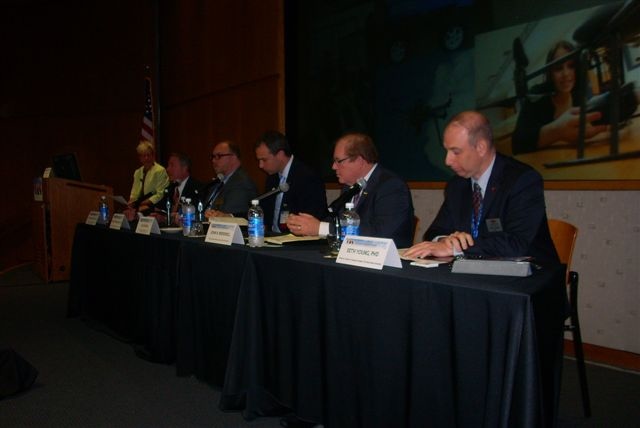Earlier this year, RWDC asked ERAU-Worldwide to develop the FY14 challenge. Recognizing the opportunity to contribute to the furthering of STEM (science, technology, engineering, and mathematics) education, our leadership agreed and made the necessary assets available. Over the last couple months I have worked with and led a diverse team of colleagues from ERAU-Worldwide, Sinclair Community College (SCC), and the RWDC Technical Team to establish the design and associated background details of the challenge. Thanks to the exceptional hardwork, dedication, and support from all those involved, we were able to create a highly relevant and interactive experience for the student teams. By participating in this challenge, the students will have an opportunity to gain a wide exposure to engineering, design, and business concepts, while they work in collaborative team environments.
I look forward to our continued involvement in the coming months as we lead a series of webinar discussions covering the background details of the respective challenge areas, including the composition and operation of UAS designs, basic aeronautical and engineering design principles, the application of UAS for precision agriculture, creation of a business case, and challenge design tools. I'm also excited about our role to develop both the National challenge component of this year's competition (judging occurs November 2014) and the subsequent design challenge scenarios in the years to come. Competitions such as RWDC offer an amazing opportunity to introduce students to exciting educational focus areas (i.e., major and minors of study) and career fields that they otherwise may never have exposure to. It is through participation in collaborative exercises promoting creative thinking, innovation, leadership, and communication that students will build the priceless experiences that serve as guides on the path to success. For more detail regarding this year's challenge, please visit the RWDC Getting Started page. To read about the announcement, check out the ERAU-Worldwide news release.
Members of the ERAU RWDC Design Team with RWDC and ERAU-Worldwide Leadership. Left to right, Dr. Brian Sanders (ERAU), Anthony Coppola (RWDC), Dr. Ken Witcher (ERAU, Dean, College of Aeronautics), Dr. Ralph Coppola (RWDC), Dr. John Watret (ERAU, Chancellor, Worldwide), Dr. Brent Terwilliger (ERAU), Dr. Andrew Shepherd (SCC), and Dr. Adeel Khalid (ERAU).






































